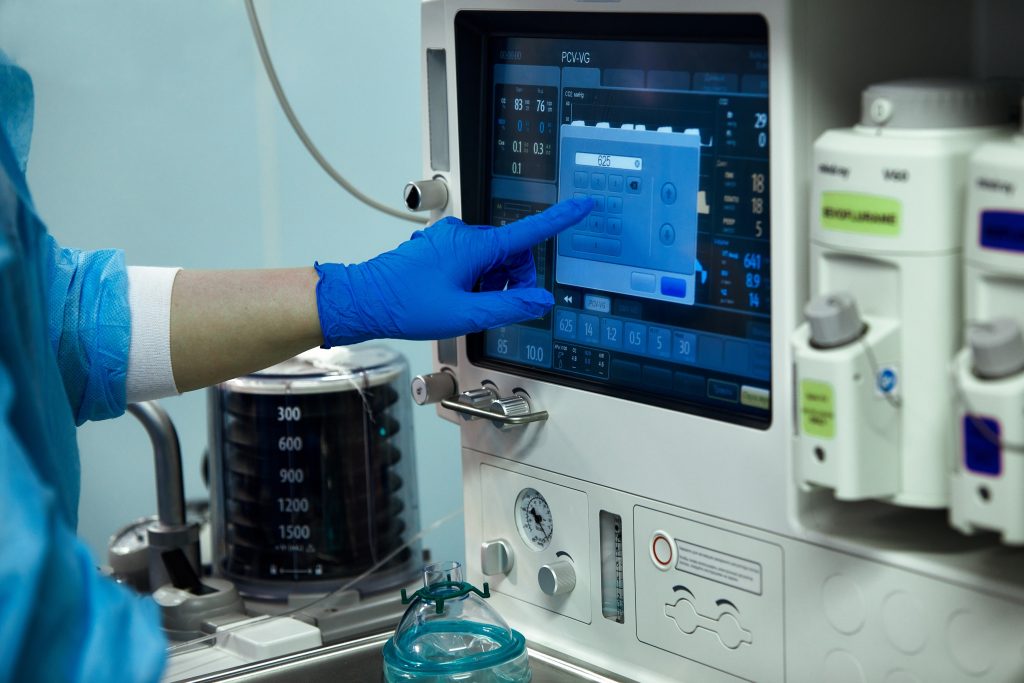
Background
AI-based health tech innovations have grown rapidly in recent years, especially with the rise of large language models (LLMs). In healthcare, LLMs and other machine learning (ML) systems are increasingly used for diagnosis, predictive modelling, and personalised medicine. For instance, models trained on historical medical images can analyse new scans to predict disease presence with high precision, often detecting abnormalities missed by humans.
Securing patent protection for such innovations requires careful attention to the strict requirements on how the invention must be described – the disclosure requirements – in European patent applications. This article examines the concepts of sufficiency and plausibility in the context of AI-based health tech inventions.
Sufficiency of disclosure
For a European patent to be granted, the application must satisfy a sufficiency of disclosure requirement. This means it must contain enough information for a “person skilled in the art” to reproduce the invention without undue effort.
The skilled person is assumed to be a practitioner in the relevant technical field with average ability and common general knowledge in the art. As such, exhaustive detail is not required, only enough information for such a person to implement the invention based on what is disclosed.
For AI-based health tech innovations, sufficiency of disclosure is particularly important regarding model training, training datasets, and network architectures. The application should describe these aspects in adequate detail to enable replication of the invention.
Meeting this requirement can be challenging when an AI algorithm functions as a “black box” or depends on proprietary data. However, sufficient disclosure can still be achieved by describing the input data characteristics, for example, the nature of patient datasets or imaging parameters used in training, without revealing sensitive information. Providing a high-level overview of the model architecture and general details of the training methodology can further help demonstrate that the invention is reproducible and meets the sufficiency of disclosure.
Decision T 1191/19 illustrates a case where a patent application in this field failed to meet the sufficiency of disclosure requirement. The application concerned the use of neural networks to guide medical interventions aimed at enhancing neuronal plasticity. The system analysed data from patients undergoing neurorehabilitation using artificial neural networks (ANNs). The Board held that the disclosure was insufficient, as the application did not provide enough detail for a skilled person to reproduce the invention.
T 1191/19 also offered guidance on what information should be included to meet the sufficiency requirement. The Board noted that the application lacked disclosure of training and validation datasets, the minimum number of patients needed to generate meaningful predictions, and the relevant parameters used. Without this information, the skilled person could not reproduce the invention without undue burden. The Board concluded that the disclosure resembled “an invitation to a research programme” rather than an enabling description. This highlights the importance of including enough technical detail for the neural network to be implemented reliably.
In summary, when drafting a patent application for an AI-based health tech invention, it is important to avoid vague references to “trained models.” The application should clearly describe the type of data used, the training methods applied, and the model architecture to ensure that a skilled person could reproduce the invention without undue burden and that the sufficiency of disclosure requirement is met.
Plausibility
For a patent to be granted, the claimed subject matter must also meet the inventive step requirement. In essence, a novel feature must produce a technical effect, which is then used to define an objective technical problem. If the proposed solution is non-obvious in view of prior art, the invention is considered inventive.
A related concept is plausibility, which concerns whether the technical effect is credibly supported by the patent application as filed. Traditionally, this issue has arisen in the chemical and life sciences fields, but following the Enlarged Board of Appeal decision G 2/21, its scope is being reconsidered, particularly regarding the use of post-published data to demonstrate technical effects.
Given that AI models often depend on numerous parameters influencing the output, similar considerations arise and examiners may question whether the claimed technical effects genuinely result from the disclosed features unless the application includes supporting data or clear evidence.
As G 2/21 is relatively recent, its application to AI in health tech remains to be seen. In healthcare, demonstrating a technical effect can be more straightforward when improvements are clearly tied to real-world outcomes, such as enhanced tumour detection in CT scans. However, showing a direct link between the claimed features and the technical effect remains a key challenge, requiring careful drafting.
The decision in G 2/21 confirmed that supplementary data obtained after filing can be used to demonstrate a technical effect, though the assessment may depend on the technical field of the invention. Accordingly, AI-related applications should include enough information to support the claimed effect. This can be achieved by explicitly describing causal relationships between specific algorithmic features and measurable improvements in the intended healthcare application.
We have seen the Board of Appeal consider the issue of inventive step in the context of AI-related health tech already. T 0161/18 provides an example in which the issue of inventive step was considered with respect to the distinguishing feature of an artificial neural network.
The application concerned a method for determining cardiac output from a peripheral arterial blood pressure curve, which was computationally transformed into an equivalent aortic pressure using an artificial neural network (ANN).
The applicant argued that the ANN enabled reliable and precise cardiac output estimation by accounting for narrowband characteristics and low-frequency resonance effects along the transmission path between the aorta and the periphery, while maintaining low computational demands suitable for mobile devices. However, the Board was not persuaded, as neither the claims nor the description included details of how the ANN was trained or structured to achieve these effects.
This decision highlights the importance of clearly connecting the technical effects of an AI model to its specific features. When drafting patent applications for AI-based inventions, the description should explicitly explain how aspects of the model, such as training methods, data characteristics, or architecture, contribute to the claimed technical improvement, thereby strengthening the case for inventive step.
Key drafting considerations for AI health tech inventions
It is clear that the success of any patent application relating to innovations relating to the use of AI in health tech is significantly influenced by how much information about the AI model is included in the patent application. The kind of information that should be set out in the patent application includes:
- Examples of the types of ML architecture that are suitable for the intended application (e.g., CNNs).
- Characteristics of the training data used to train the ML model (e.g., image data, including any pre-processing steps).
- The specific output of the ML model (e.g., binary classifications).
- Causal links between the output of the ML model and an improved technical outcome (e.g., improved image segmentation leading to enhanced diagnostic reliability).
Conclusion
In summary, obtaining European patent protection for AI-based healthcare innovations requires careful attention to the requirements of sufficiency of disclosure and plausibility under European patent law. Providing clear and detailed information about the AI model, its training, data, and technical effects is essential to ensure that the invention meets these standards and avoids exclusion from patentability.
For further discussion or advice on patent protection in AI or digital health technologies, please contact us at gje@gje.com


